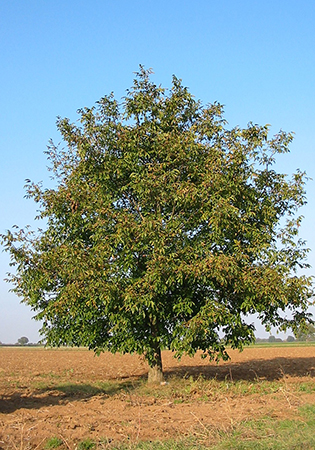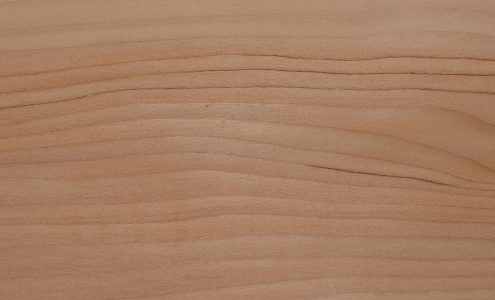National Walnut
The national walnut is a heavy wood, differentiated, with whitish or slightly yellowish sapwood and brownish or dark brown heartwood sometimes tending to gray or with blackish variegations. The area occupied by the heartwood is very variable from tree to tree.
The texture is medium and the grain is generally straight.
The trunks can have strong internal tensions that lead them to ruptures after knocking down.
Technological properties
The national walnut is characterized by a semi-hard wood, resistant to bending. It is a very well workable wood, easy to cut and to paint. The figured pieces and the roots are in particular destined to this last working. It is vaporized so that the sapwood can also be exploited.
The natural resistence to mushrooms is moderate, it is not resistant to xylophagous insects.
Use
Due to its high aesthetic value and good mechanical characteristics, it has been and still is one of the most sought after species for the production of furniture and fine furniture (from the Renaissance period in particular), it is also used for handicrafts, decorative wooden elements, kicks for rifles, billiard cues, floors and veneers for veneering.
Some stems provide particularly valuable roots and feathers.
Typical defects
Easily attacked by xylophagous insects, it can present evident chromatic differences.
Technical details of the national walnut
| Family | European Hardwood Family |
| Scientific name | Juglans regia L. |
| Other names | Noyer (F); Walnut (GB); Nussbaum (D); Nogal (E) |
| Geographic origin | Mixed hardwood forests from all over Europe from the plain to the hilly and mountainous belt |
| Specific weight Medium | Fresh 970 kg/m3 |
| Dried 590 kg/m3 | |
| Sawing | Easy |
| Drying | Medium rapid with risk of collapse |
| Planing | Easy |
| Glueing | Easy |
| Nailing and screwing | Easy |








